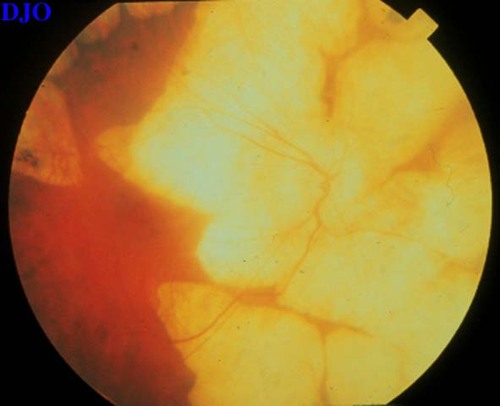|
|
 |
 |
 |
 |
|
|
Retina/Uveitis Quiz 18
|
Printer Friendly
|



Rosa Y Kim, MD | Massachusetts Eye and Ear Infirmary, Harvard Medical School May 6, 1997
|
|
[Back to Questions] [Back to Retina/Uveitis]
|

Figure 1
This patient complained of worsening vision in both eyes, especially at night, which occurred over the course of years. He had no significant refractive error.
|
| Questions and Answers | 1. What is the most likely diagnosis?
Answer: Gyrate atrophy.
2. What is the mode of inheritance in this disease?
Answer: Autosomal recessive.
3. What enzyme is reduced in this condition?
Answer: Ornithine aminotransferase, a mitochondrial matrix enzyme.
4. What is the natural history of this condition?
Answer: Early on in the disease process, patients are relatively asymptomatic. They usually experience onset of nyctalopia beginning within the first decade of life. Later, peripheral visual fields are lost. Finally, central vision is lost in the fifth to sixth decades.
5. What therapies are available for this condition?
Answer: 1) Pyridoxine may stimulate the residual ornithine aminotransferase activity and reduce the plasma ornithine level. 2) Restrict the dietary intake of arginine, which is an ornithine precursor. 3) Increase renal excretion of ornithine by utilizing lysine and alpha-aminoisobutyric acid, which interferes with amino acid transport in the kidney. All of the above therapies have had limited success and variable responses.
| | | [Back to Questions] |
|
 |
 |
 |

|
|
 Welcome, please sign in
Welcome, please sign in  Welcome, please sign in
Welcome, please sign in